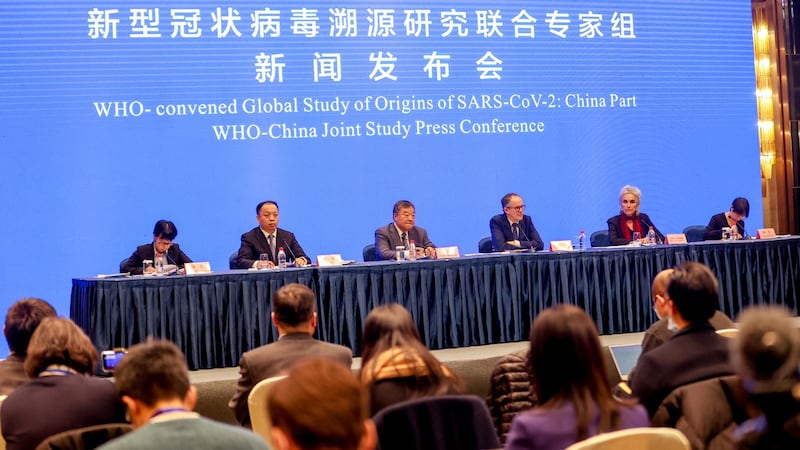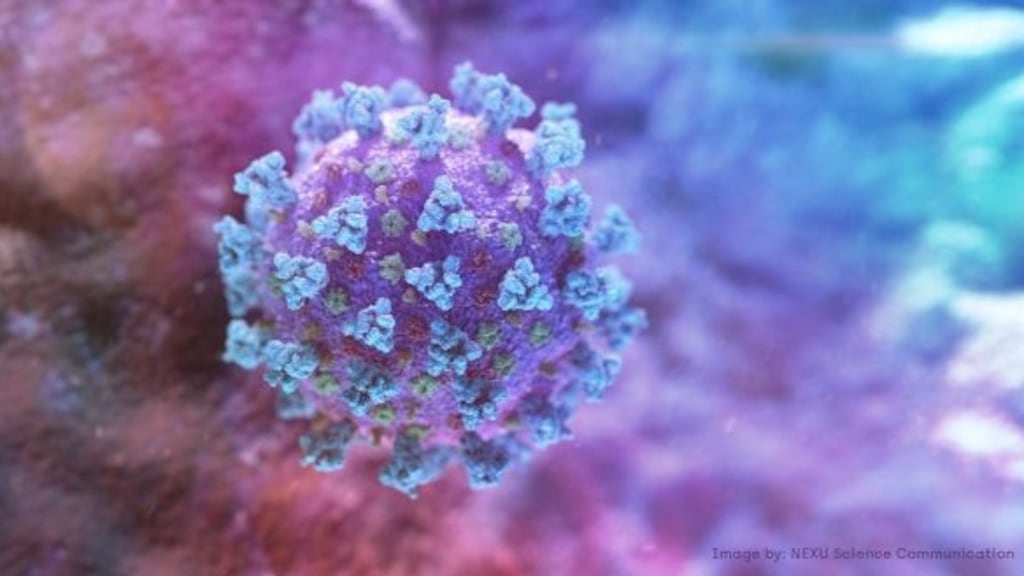Despite all the focus on the Covid-19 pandemic, the ultimate cause remains a mystery.
Ideas that once seemed to belong to the realm of conspiracy theory, such as that the virus leaked from a Chinese laboratory, are now gaining traction. Last week US president Joe Biden ordered his intelligence staff to intensify efforts to determine the origins of the virus. One line of inquiry will be whether it leaked from the Wuhan Institute of Virology, which has been studying coronavirus in bats for more than a decade.
US public health chief Anthony Fauci backed the investigation, saying he was "not convinced" the virus emerged naturally – a big change from last year when he expressed the view that the science "strongly indicates" it emerged naturally.
The issue is not academic. As Prof Luke O'Neill of Trinity College Dublin has pointed out, we need to know how Sars-CoV-2 originated in order to prevent a pandemic of "Sars-CoV-3". A proven lab leak, although it would have massive political consequences, could be less worrying scientifically than a scenario where the virus was shown to have jumped easily from animals to humans.
Irish scientists tend to favour the natural transmission theory, while highlighting the gaps in our knowledge.
“The evidence is very clear that this is a natural virus,” says Prof James McInerney, head of the school of life sciences at the University of Nottingham. “We have complete genomes of this virus and several close relatives that are found in nature. The virus has evolved by the usual processes of mutation and natural selection.
Immunologist Prof Paul Moynagh of Maynooth University says: "It's difficult to be definitive. Until we have all the available information, we can't know for sure" of the origins of Sars-CoV-2.
There is a “higher probability” the virus arose naturally, based on its phylogenetic properties – the evolutionary development of the organism.
The most closely related viruses in bats are about 97 per cent similar to Sars-CoV-2, but this is “still a big difference”, he says. In contrast, a new variant might involve a 0.2 per cent genetic difference.
No signature
Organisms that have been genetically modified – and these include adenoviral vectors used in the AstraZeneca and Johnson & Johnson vaccines – have a changed signature that is identifiable by scientists.
Infectious diseases consultant Prof Sam McConkey says Sars-CoV-2 doesn’t have the signature one would expect of a genetically modified organism, and he therefore does not believe it was made in a lab.
Dismissing the theory that it could have been maliciously created and released, he points out that the virus forced the complete shutdown of Wuhan and the surrounding province last year.
“So this looks like a naturally evolved virus, though we don’t know whether it came from another animal or happened in a lab.”
While lab accidents “do happen”, says McConkey, “I’d put my money on this having happened in nature. There are far more animals in the wild.”
The first cluster of Covid-19 cases emerged at a “wet market” in Wuhan, where live animals were sold. With the animals often caged tightly together in highly stressful conditions, these provide the optimal conditions to facilitate animal-human transmission of a virus, he says.
UCD infectious diseases consultant Prof Jack Lambert believes the virus most likely originated in the Wuhan lab, just a few kilometres from the wet market, and spread to humans through unintentional contamination.
He points to a number of “strange connections” in support of his contention. Chinese lab researchers were working close to the wet market, he says, and Chinese scientists had been working on the spike protein in coronaviruses.
“There are geographical and scientific links to the institute in Wuhan,” he says, adding that the Chinese government is “not to be trusted” on the issue.
“Zoonotic infections that transfer from animals to humans don’t generally like humans. They usually die out, but this one is getting stronger. It is not acting like a typical virus that has mutated to humans. There’s something different about it.”

US ‘conspiracy’
Earlier this year, a World Health Organisation investigation concluded the lab-leak theory was "extremely unlikely". It suggested the virus spread naturally from animals by jumping from bats to humans via another animal. However, scientists have failed to find a virus with the same genetic make-up as Covid-19 in bats or other animals, thereby casting doubt on the theory.
Now even WHO's director-general, Dr Tedros Adhanom Ghebreyesus, has said "all hypotheses remain open and require further study".
China has rejected the lab-leak theories, describing them as "a conspiracy created by US intelligence agencies".
Prof McInerney believes the amount and quality of evidence needed to resolve the issue has not been obtained. “The WHO study data was collected by Chinese scientists and the WHO have clearly said they need to see more and to know about more samples. A definitive answer needs more data, independent oversight on the data collection and the removal of any uncertainty about conflicts of interest.”
In lab research, “you capture everything you do”, Prof Moynagh says, so there should be records available that can show exactly what kind of work was being done in Wuhan.
Scientists are highly conscious of the politics at play. From the start of the pandemic, China was accused of a lack of transparency around the virus, and the fresh US investigation into the Wuhan lab is in itself a symptom of growing Sino-US tensions.
“I really feel that anybody that says they ‘know’ the answer to the lab leak hypothesis is really not looking at the broad picture,” says Prof McInerney.
“I don’t believe we have had a sufficiently complete analysis of the data to say we know for sure. This issue is in danger of becoming a big conspiracy theory and so it is very important to get enough data to put the answer to bed one way or another.”


















